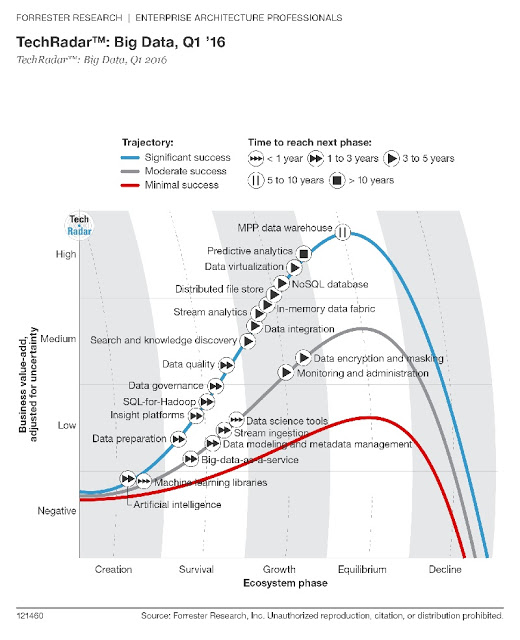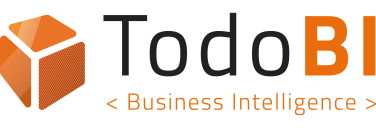
Se habla mucho de Big Data, sus tecnologías, aplicaciones, etc... pero resulta difícil concretar el principal uso que le podemos dar, así como su nivel de madurez.
A continuación se indican las principales tecnologías en las que tiene una aplicación real:
- Predictive analytics : software and/or hardware solutions that allow firms to discover, evaluate, optimize, and deploy predictive models by analyzing big data sources to improve business performance or mitigate risk.
- NoSQL databases : key-value, document, and graph databases.
- Search and knowledge discovery : tools and technologies to support self-service extraction of information and new insights from large repositories of unstructured and structured data that resides in multiple sources such as file systems, databases, streams, APIs, and other platforms and applications.
- Stream analytics : software that can filter, aggregate, enrich, and analyze a high throughput of data from multiple disparate live data sources and in any data format.
- In-memory data fabric : provides low-latency access and processing of large quantities of data by distributing data across the dynamic random access memory (DRAM), Flash, or SSD of a distributed computer system.
- Distributed file stores : a computer network where data is stored on more than one node, often in a replicated fashion, for redundancy and performance.
- Data virtualization : a technology that delivers information from various data sources, including big data sources such as Hadoop and distributed data stores in real-time and near-real time.
- Data integration : tools for data orchestration across solutions such as Amazon Elastic MapReduce (EMR), Apache Hive, Apache Pig, Apache Spark, MapReduce, Couchbase, Hadoop, and MongoDB.
- Data preparation : software that eases the burden of sourcing, shaping, cleansing, and sharing diverse and messy data sets to accelerate data’s usefulness for analytics.
- Data quality : products that conduct data cleansing and enrichment on large, high-velocity data sets, using parallel operations on distributed data stores and databases.
Visto en Forbes


